Welcome to my beginner’s guide on creating easy backyard gardens. Whether you have a green thumb or are just starting out, this guide will help you transform your outdoor space into a blooming oasis with simple and beginner-friendly gardening tips.
If you’re ready to roll up your sleeves and get your hands dirty, let’s dive right in!
Key Takeaways
- Pick a sunny, stable, and well-drained location for your garden
- Start small and grow what you know you’ll eat
- Choose easy-to-grow vegetables suitable for your climate and preferences
- Prepare your soil with organic matter and nutrients
- Decide between seeds and transplants and consider using containers or raised beds
- Enjoy the process of gardening and harvesting your own vegetables!
Picking the Right Location is Crucial for Easy Backyard Gardens
When it comes to creating easy backyard gardens, picking the right location is crucial. Find a sunny spot in your yard that receives at least 6-8 hours of direct sunlight each day, as most vegetables thrive in full sun. In addition to sunlight, the soil should be well-drained to avoid waterlogging that can lead to root damage and disease. Stability is also important, so avoid planting in areas that are subject to strong winds. Nutrient-rich soil is essential for the healthy growth of your plants.
It is important to choose a plot size that is manageable and start small if you are a beginner. Some easy vegetables to grow for beginners include lettuce, green beans, radishes, tomatoes, zucchini, peppers, beets, carrots, chard, spinach, kale, and peas. Create a vision based on your space and ensure you are working with healthy soil. Plant seeds or use transplants depending on your preference, and consider using containers or raised beds for your garden.
Start Small and Grow What You Know You’ll Eat
As a beginner in backyard gardening, it’s best to start small and focus on growing vegetables that you know you and your family will eat. There’s no need to go overboard and cultivate a huge garden that may take up too much time and could ultimately go to waste. Instead, take it slow and choose a few easy-to-grow vegetables to start with. Not only will this approach save time and energy, but it will also allow you to learn the basics of gardening and gain confidence in your abilities.
Choosing vegetables that you enjoy eating is imperative. There’s no point in growing vegetables that will eventually go to waste. Stick to veggies that you know you and your family will eat regularly and that are readily available in your local grocery store. This way, you can rest assured that your hard work will not go to waste.
Consider the size of your garden. If you have limited space, it’s better to start small and only grow a few vegetables. You can always expand later on. Don’t feel like you have to do everything at once. Remember, gardening is a learning process, and it’s okay to make mistakes.
When it comes to choosing vegetables, start with easy-to-grow options like lettuce, green beans, radishes, and root vegetables like beets and carrots. These veggies are perfect for beginners and require minimal care. You can also try growing tomatoes (transplants), zucchini, peppers (transplants), and chard, spinach, or kale.
It’s essential to prepare the soil for your garden. Whether you’re using rich, high-quality soil or supplementing lower-quality soil with compost or plant food, your plants will appreciate the nutrient boost. Start with seeds or transplants depending on your preference and the level of care required.
When it comes to containers, choose pots, raised beds, or trellises based on your space and what you’re growing. Prepare the soil and choose vegetables that you love to eat and are suitable for your climate and sunlight conditions. Some easy-to-grow vegetables include cucumbers, cabbage, tomatoes, root vegetables, peas, and herbs like basil and cilantro. Regardless of the chosen vegetables, there are numerous delicious and creative ways to use them.
Gardening is a rewarding hobby that allows you to enjoy fresh, home-grown vegetables and connect with nature. By starting small and growing what you know you’ll eat, you can ensure a successful and satisfying experience.
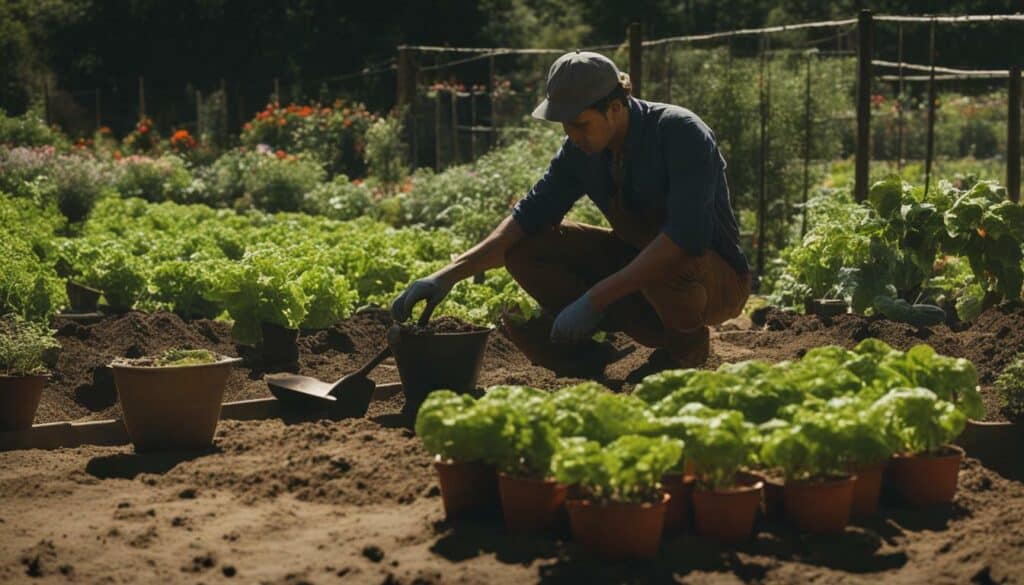
Choose Easy Vegetables for Beginner’s Backyard Gardens
When selecting vegetables for your beginner’s backyard garden, it’s best to choose easy-to-grow options that will give you a high chance of success. These vegetables require minimal maintenance and are productive, making them perfect for beginners.
| Vegetables | Type |
|---|---|
| Lettuce | Leafy green |
| Green beans | Legume |
| Radishes | Root vegetable |
| Tomatoes | Fruit (by transplant) |
| Zucchini | Squash |
| Peppers | Fruit (by transplant) |
| Beets | Root vegetable |
| Carrots | Root vegetable |
| Chard | Leafy green |
| Spinach | Leafy green |
| Kale | Leafy green |
| Peas | Legume |
When planting these vegetables, it’s important to pick a suitable location for your garden. Choose an area that receives 6 to 8 hours of direct sunlight per day and has well-draining soil. Start small and gradually expand your garden as you gain experience.
Prepare the soil for your backyard garden by adding organic matter to improve its nutrient content. This will ensure that your plants have the necessary nutrients to grow and produce healthy vegetables.
When starting your garden, you can choose to plant seeds directly into the soil or use transplants, depending on your preference and the level of predictability you desire. If you have limited space, consider using containers or raised beds. This will allow you to grow a variety of vegetables in a small area.
Lastly, remember to choose vegetables that you and your family enjoy eating. Have fun experimenting with different varieties and recipes using your homegrown produce. With these easy tips and suggestions, your beginner’s backyard garden is sure to be a success!
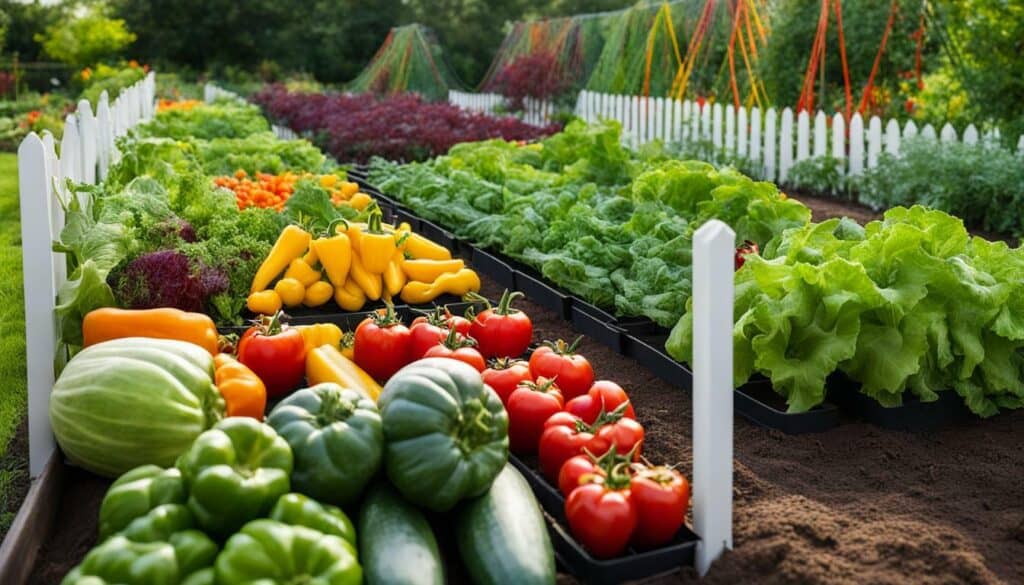
Pick Vegetables Suited for Your Grocery Store Availability and Climate
Before finalizing your backyard garden vegetable choices, take into account the availability of veggies in your local grocery store and the climate in your area. Choosing vegetables that are familiar to you and easy to find at your grocery store can make the process of growing your own veggies much easier. Additionally, selecting vegetables that are suitable for your climate will help ensure the success of your garden.
When selecting vegetables, consider varieties that are easy to grow in your area and that you and your family enjoy eating. Some easy-to-grow options include cucumbers, cabbage, tomatoes, root vegetables, peas, and herbs. These vegetables typically require minimal care and are well-suited for backyard gardens.
Proper planning is also essential when starting a home vegetable garden. It is important to plant crops at the right time of year, based on your climate. For instance, cool-season vegetables like lettuce and spinach should be planted early in the season, while warm-season vegetables like tomatoes and peppers should be planted later on.
Preparing the soil is another crucial factor in backyard gardening success. Before planting, ensure that the soil is healthy and rich in nutrients. Adding compost or using a high-quality soil mix can help provide the right conditions for your plants to thrive.
If you have limited space, container gardening can be a viable option. This method involves placing plants in containers, such as pots or troughs, and can be done on a patio or balcony. Raised beds are another space-efficient option, providing better drainage and more control over the quality of the soil.
Ultimately, the satisfaction that comes with growing your own vegetables and experimenting with new recipes is worth the effort. Take care of your plants throughout the growing season, using high-quality seeds and providing adequate water and sunlight. With patience and dedication, you can enjoy the rewards of homegrown produce and a bountiful backyard garden.
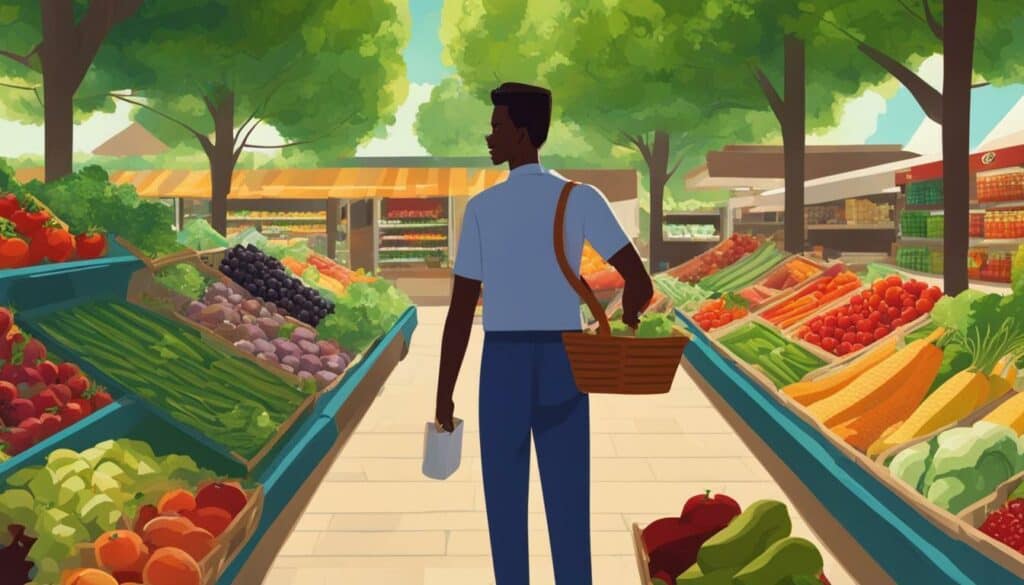
Prepare the Soil for Easy Backyard Gardening
To set your backyard garden up for success, it’s important to prepare the soil properly before planting your vegetables. The first step is to choose a suitable location for your garden that receives 6 to 8 hours of direct sunlight per day and has well-draining soil. If your soil is thin and nutrient-poor, it’s beneficial to mix in organic matter such as compost or high-quality soil mix to improve its quality.
Starting small is recommended for beginners, and a 10′ x 10′ garden or a 4′ x 4′ or 4′ x 8′ raised bed is manageable. When choosing vegetables, it’s important to select ones that are easy to grow and that you and your family enjoy eating. It’s also helpful to consider the availability of veggies at your local grocery store. Planting times vary depending on whether the vegetables are cool-season or warm-season crops.
Starting plants from seeds is more affordable but less predictable, while transplants are easier to care for. Containers, raised beds, and trellises are all suitable options for a backyard garden, depending on your space preferences. Whatever you choose, make sure to use high-quality soil to ensure the right nutrients and conditions for your plants to thrive.
If you’re new to gardening, it’s best to start with easy-to-grow vegetables like cucumbers, cabbage, tomatoes, root vegetables, peas, and herbs. These vegetables are low maintenance and require minimal care. By following these tips, you’ll be on your way to creating a successful and enjoyable backyard garden.
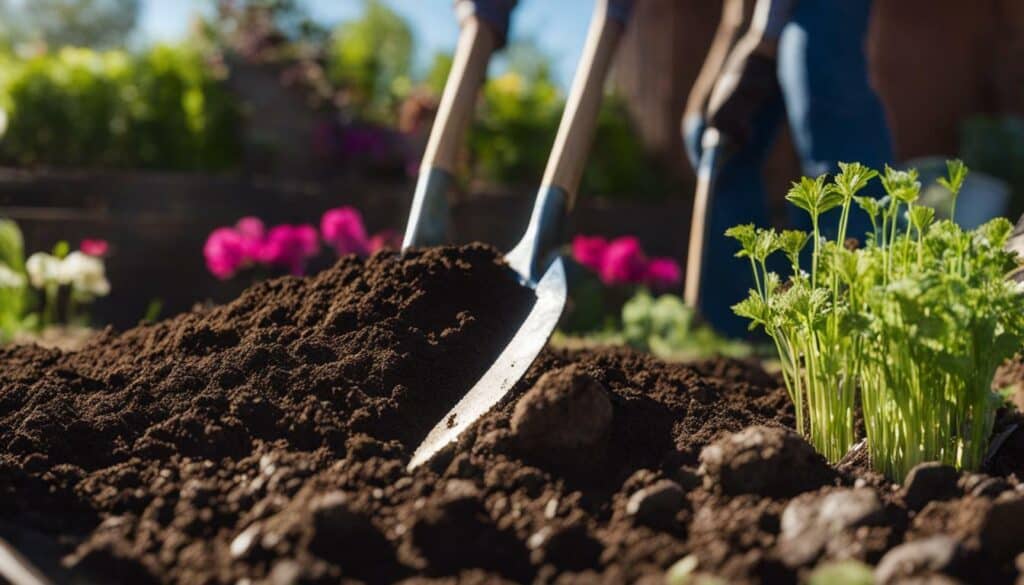
Pick Between Seeds or Transplants for Your Easy Backyard Garden
One decision you’ll need to make when starting your backyard garden is whether to use seeds or transplants for your vegetable plants. There are various factors to consider, including space, sunlight, and personal preferences. Using seeds is a more affordable option but can be less predictable, as it’s harder to control germination and growth. However, starting with seeds gives you a wider variety of vegetables to choose from and enables you to control the entire growing process.
If you opt for transplants, you’ll have an easier time handling them, and they tend to have a higher success rate. You’ll also have more control over the spacing of your plants, and they’ll be less vulnerable to pests and disease. However, transplants can be more expensive, and you’ll have a more limited selection of vegetables to choose from.
No matter which option you choose, it’s crucial to ensure that your soil is healthy and nutrient-rich before planting your seeds or transplants. This can be achieved by using compost or a high-quality soil mix. Additionally, selecting the right location for your garden is essential, with a south-facing or west-facing spot being ideal for maximum sun exposure. By taking these steps, you’ll be well on your way to creating a thriving vegetable garden that provides fresh and delicious produce.
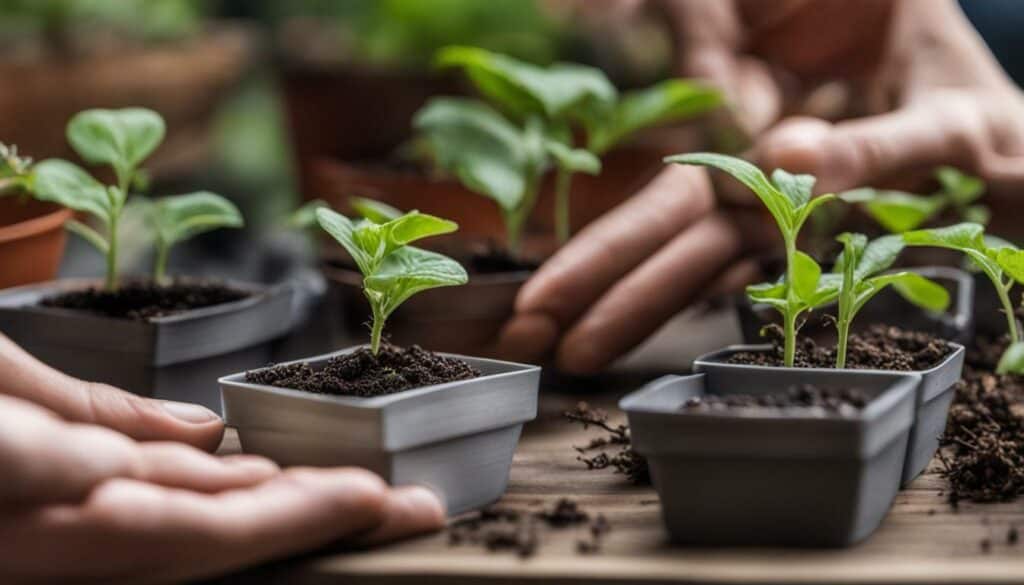
“Using seeds is a more affordable option but can be less predictable, as it’s harder to control germination and growth.”
Pick Between Containers and Raised Beds for Your Easy Backyard Garden
Depending on the space you have available and your personal preferences, you can choose to implement containers or raised beds for your easy backyard garden. Both options offer great advantages, including optimal soil drainage, reduced weed growth, and maximized space usage.
Containers
Containers are a great option for those with limited outdoor space or those who are looking for a portable garden that can be moved around. They can be made from various materials such as plastic, ceramic, or wood and come in different sizes and shapes. Containers are also a good choice for those who want to grow just a few vegetables or herbs.
When selecting containers, make sure they have adequate drainage holes to prevent water buildup. Additionally, consider the size of the containers and the specific vegetable needs. For example, tomatoes and peppers need larger containers than radishes and lettuce.
Containers offer the advantage of more control over soil quality and can be filled with high-quality soil mix, whereas planting directly in the ground may be more difficult to control.
Raised Beds
Raised beds are perfect for those who have plenty of outdoor space and are looking for a more permanent garden solution. Raised beds are usually constructed from wood or stone, and the soil is contained within the walls of the bed. They can be any shape or size and can be customized to suit your needs.
One of the significant advantages of raised beds is that the soil warms up faster in the spring, allowing for earlier planting and a longer growing season. They also tend to have better drainage as the soil is elevated above the ground.
When selecting a location for your raised bed, make sure it receives plenty of sunlight and has easy access to water.
Overall, Consider Your Space and Preferences
When deciding between containers and raised beds, consider the amount of space you have available, the number of vegetables you want to grow, and your personal preferences. It’s important to remember that both methods offer great advantages, and the ultimate decision depends on what works best for you.
No matter which method you choose, both containers and raised beds offer a great opportunity to create a beautiful and healthy backyard garden.

Choose Vegetables You Love for Your Backyard Garden
When planning your backyard garden, make sure to choose vegetables that you love to eat and are suitable for your climate and the level of sun and shade in your yard. Research the availability of vegetables in your local grocery store and select those that can thrive in your region.
It’s important to be realistic about the amount of produce you can grow and care for, especially as a beginner. Consider the size of your garden based on your needs and available space. Be prepared to take care of your plants throughout the growing season, ensuring that they receive enough water, nutrients, and protection from pests.
Healthy soil is crucial for the success of your garden, so prepare the soil with compost or a high-quality soil mix to provide the right nutrients and structure. Whether you decide to start from seeds or transplants, ensure that your soil is healthy and that you have the right growing conditions for your vegetables.
Depending on the space you have available, you can choose to use containers or create raised beds for your garden. Select a container size and type that is appropriate for the vegetables you want to grow, and make sure they have proper drainage. Raised beds can help with drainage and soil quality, and they can also make it easier to tend to your plants without having to bend down.
If you’re unsure where to start, try easy-to-grow vegetables such as cucumbers, cabbage, tomatoes, root vegetables, and herbs. These vegetables are beginner-friendly and can thrive in a variety of growing conditions.
Creating a backyard garden not only provides you with fresh, delicious produce, but it also allows you to connect with nature and enjoy the rewards of your hard work. By choosing vegetables that you love and are suitable for your climate and growing conditions, you can ensure a bountiful harvest and a satisfying gardening experience.
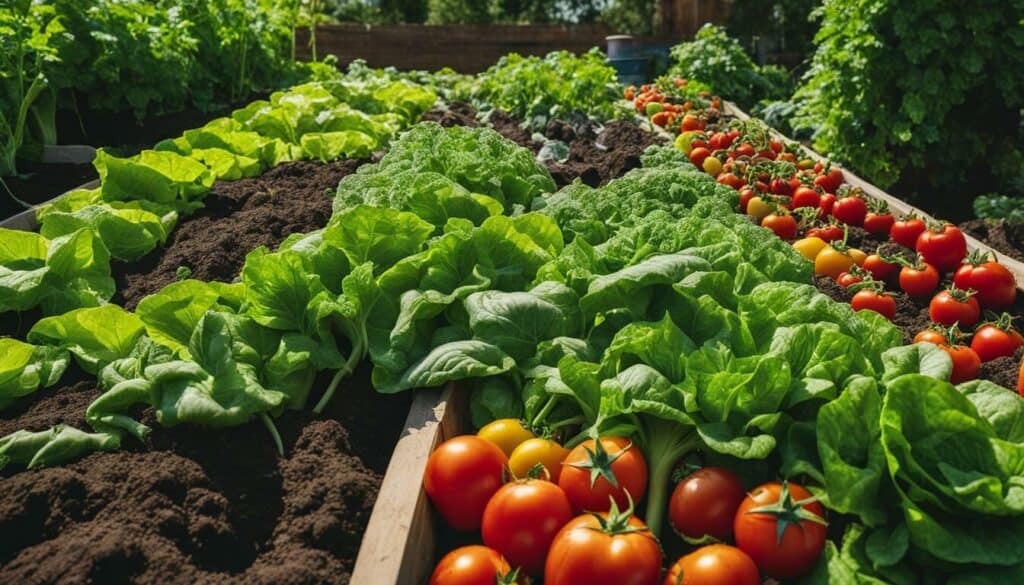
Start with Easy-to-Grow Vegetables
If you’re a beginner looking for easy-to-grow vegetables for your backyard garden, consider starting with options like cucumbers, cabbage, tomatoes (by transplant), root vegetables, peas, and herbs. These vegetables are simple to cultivate and have various culinary uses, making them great additions to any garden.
When choosing which vegetables to grow, keep in mind the size of your garden and how many plants you want to care for. Start small and only grow what you know you’ll eat to avoid waste.
Make sure your garden is located in a sunny spot that receives 6 to 8 hours of direct sunlight per day and has well-drained soil. Choose vegetables that are suitable for your climate and planting season, and follow specific planting requirements for each vegetable.
Prepare the soil with compost or high-quality soil mix, ensuring it has the right texture and pH level. Consider using containers or raised beds to optimize space and make sure the soil is prepared appropriately.
Choose whether to use seeds or transplants based on your experience and preferences, and enjoy the process of growing your own homegrown vegetables. Remember that gardening can be a satisfying and rewarding hobby, and even if you face some challenges, the sense of pride when harvesting your own produce is unparalleled.

Enjoy the Process of Gardening and Harvesting
Above all, remember to enjoy the process of gardening and the satisfaction that comes from harvesting and using your own homegrown vegetables. Gardening is not just about the end result; it’s about the journey and the process of nurturing your plants from seeds to mature produce.
Harvesting your vegetables is a time of great excitement and pride, as you get to see the fruits of your labor come to life. The sense of accomplishment and satisfaction that comes from picking your own fresh herbs, crisp lettuce, or juicy tomatoes, cannot be replicated by anything found in a grocery store.
Not only is gardening and harvesting fulfilling but it can also be a great stress-reliever and a way to connect with nature. Spending time outdoors and getting your hands dirty can help to clear your mind and improve your mood.
Remember, successful gardening takes time and effort, but the rewards are well worth it. Enjoy the process, learn from your mistakes, and take pride in the homegrown vegetables that you produce.
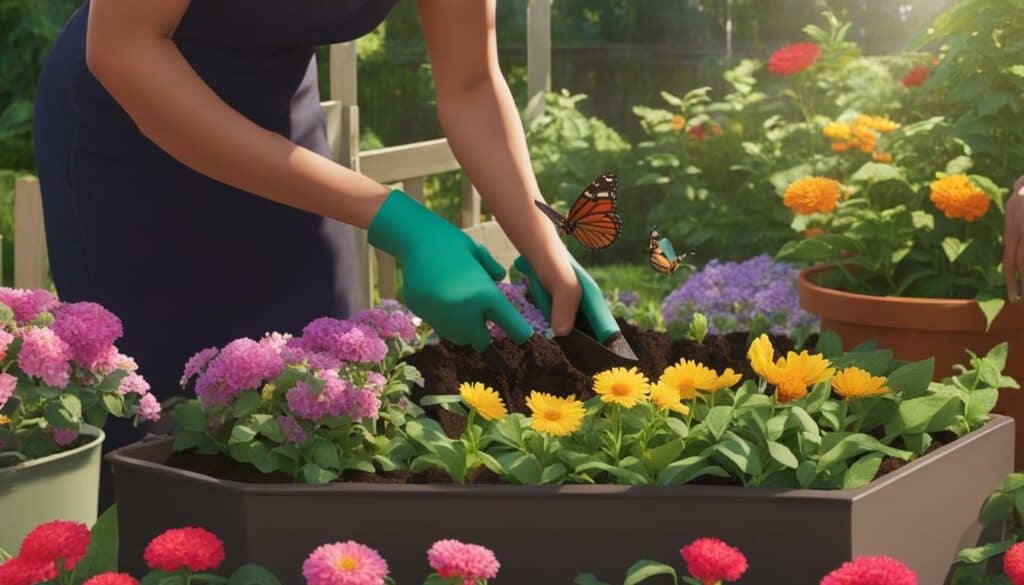
As you care for your garden throughout the growing season, don’t forget to take a step back and appreciate the beauty of the plants you have nurtured. Continue to water and weed your garden regularly, and keep an eye out for any pests or diseases that may threaten your plants.
When it comes time to harvest your vegetables, be gentle and careful. Use scissors or garden shears to cut your vegetables from the plant, and take care not to damage the remaining produce. You can enjoy your homegrown vegetables immediately, use them in your favorite recipes, or share them with friends and family.
Gardening and harvesting can be a truly rewarding experience. By getting your hands dirty and putting in the effort, you can enjoy delicious homegrown produce and a greater connection with nature. So, embrace the process, have fun, and savor the delicious results of your efforts.
What Are Some Expert Tips for Beginners on Planning a Backyard Garden?
If you’re a beginner, planning a backyard garden may seem overwhelming. But fear not! These expert tips will help you plan your backyard garden like an expert. Start by analyzing your space, considering sunlight, soil type, and climate. Research the plants suitable for your region and create a layout accordingly. Don’t forget to allocate proper space for each plant and take into account their growth patterns. Lastly, make a schedule for watering, fertilizing, and pruning to ensure your garden flourishes.
Conclusion
In conclusion, with the guidance provided in this beginner’s guide, you can confidently create easy backyard gardens that will transform your outdoor space into a beautiful and productive oasis. Remember to choose a location that receives adequate sunlight and has well-draining soil, and start small with vegetables that you know you and your family will enjoy. Research which vegetables are suitable for your region and choose between seeds or transplants. Consider utilizing containers or raised beds based on your available space and preferences, and don’t forget to prepare your soil using compost or a high-quality soil mix. Lastly, choose vegetables that you love and are easy to grow, and enjoy the process of gardening and harvesting your homegrown vegetables. Starting a vegetable garden can be a rewarding and fulfilling hobby that not only provides fresh produce but also brings joy and a sense of accomplishment. Happy growing!
FAQ
Q: What factors should I consider when picking the right location for my backyard garden?
A: It is crucial to choose a sunny spot with well-drained soil that is stable and not windy.
Q: How should I start my backyard garden as a beginner?
A: It is recommended to start small and only grow vegetables that you know you and your family will eat.
Q: What are some easy vegetables for beginner’s backyard gardens?
A: Some easy vegetables to start with are lettuce, green beans, radishes, tomatoes, zucchini, peppers, beets, carrots, chard, spinach, kale, and peas.
Q: Should I consider the availability of vegetables at my grocery store and the climate in my area when choosing what to grow?
A: Yes, it is important to consider the availability of vegetables at your grocery store and choose vegetables that are suitable for your climate.
Q: How should I prepare the soil for my backyard garden?
A: You can prepare the soil by using compost or a high-quality soil mix to ensure the right nutrients and conditions for your plants.
Q: Should I start with seeds or transplants for my backyard garden?
A: It depends on your preference. Seeds are more affordable but less predictable than transplants.
Q: What are the options for containers or beds for my backyard garden?
A: You can choose to use containers or raised beds depending on your available space and personal preferences.
Q: What should I consider when choosing vegetables for my backyard garden?
A: Research and choose vegetables that you love to eat and are suitable for your climate, sun exposure, and shade exposure.
Q: What are some easy-to-grow vegetables for beginners?
A: Some easy-to-grow vegetables for beginners are cucumbers, cabbage, tomatoes, root vegetables, peas, and herbs.
Q: How can I enjoy the process of gardening and harvesting?
A: Take pleasure in the process of gardening and enjoy the satisfaction of harvesting and using your homegrown vegetables.
Source Links
- https://www.npr.org/2020/04/17/837300800/this-is-a-good-time-to-start-a-garden-heres-how
- https://www.almanac.com/vegetable-gardening-for-beginners
- https://www.readyseteat.com/inspiration-and-tips/beginners-guide-home-vegetable-garden
- https://jenelizabethsjournals.com/2019/08/16/easy-beginner-guide-plant-your-organic-backyard-garden-in-one-weekend/
- https://growinginthegarden.com/gardening-for-beginners-how-to-start-a-garden-in-8-simple-steps/
- https://growitbuildit.com/14-factors-to-choose-your-vegetable-garden-location/
- https://www.gardensthatmatter.com/choose-garden-location/
- https://www.almanac.com/where-put-vegetable-garden
- https://frugalfamilyhome.com/home/gardening/how-to-start-a-vegetable-garden-from-scratch
- https://www.architecturaldigest.com/story/vegetable-garden-ideas
- https://shiftingroots.com/10-easy-vegetables/
- https://www.countryliving.com/gardening/garden-ideas/g43413616/vegetable-garden-for-beginners/
- https://stylebyemilyhenderson.com/blog/easy-home-vegetable-garden
- https://www.nature.org/content/dam/tnc/nature/en/documents/nature-lab-lesson-plans/FoodandCarbon-NL-TeacherGuide.pdf
- https://www.gardendesign.com/soil/
- https://hort.extension.wisc.edu/articles/beginning-vegetable-garden-basics-site-selection-and-soil-preparation/
- https://www.zone3vegetablegardening.com/post/how-to-prepare-garden-soil-for-planting
- https://savvygardening.com/start-from-seed-or-buy/
- https://www.gardenary.com/blog/should-you-plant-seeds-or-plants-in-your-garden
- https://www.millcreekgardens.com/seeds-vs-plant-nursery-seedlings-which-is-best-for-a-new-garden/
- https://www.almanac.com/content/how-build-raised-garden-bed
- https://www.gardenary.com/blog/how-to-build-a-raised-garden-bed-for-just-100
- https://www.thespruce.com/raised-bed-garden-ideas-4172154
- https://savvygardening.com/easiest-vegetables-to-grow/
- https://getbusygardening.com/easy-to-grow-vegetables/
- https://www.almanac.com/content/10-easy-vegetables-grow-seed
- https://www.bhg.com/gardening/yard/garden-care/ten-steps-to-beginning-a-garden/
- https://commonsensehome.com/start-a-garden/
- https://agricultureandfoodsecurity.biomedcentral.com/articles/10.1186/2048-7010-2-8
- https://www.ncbi.nlm.nih.gov/pmc/articles/PMC6372235/

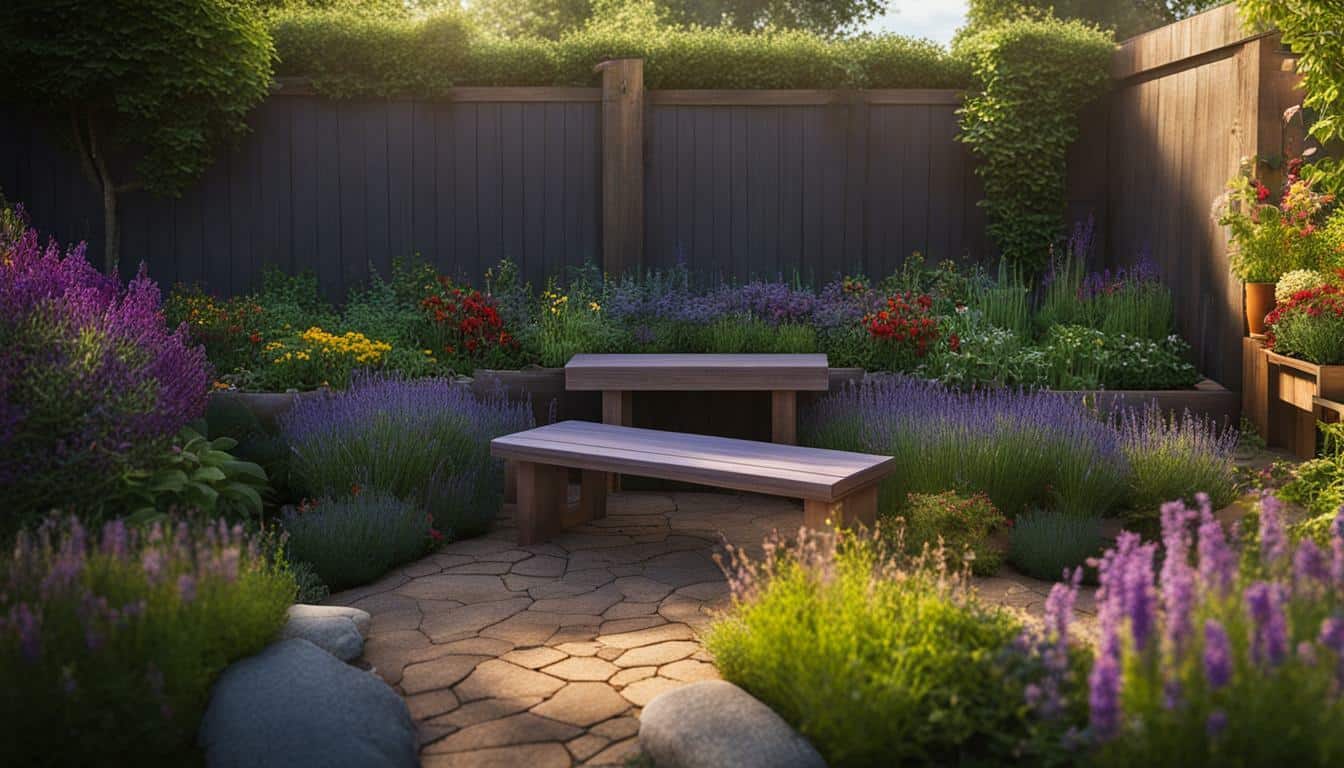



Leave a Reply